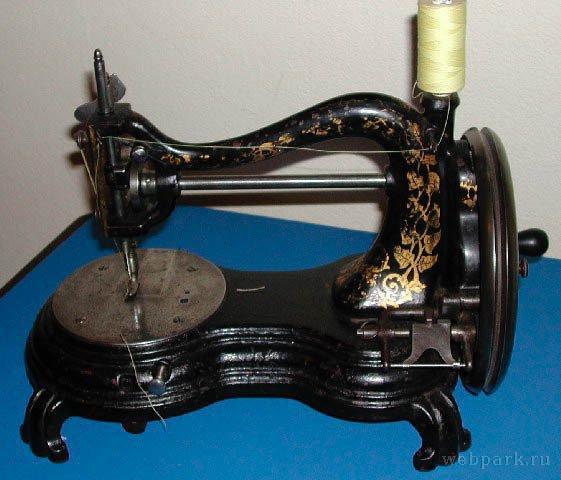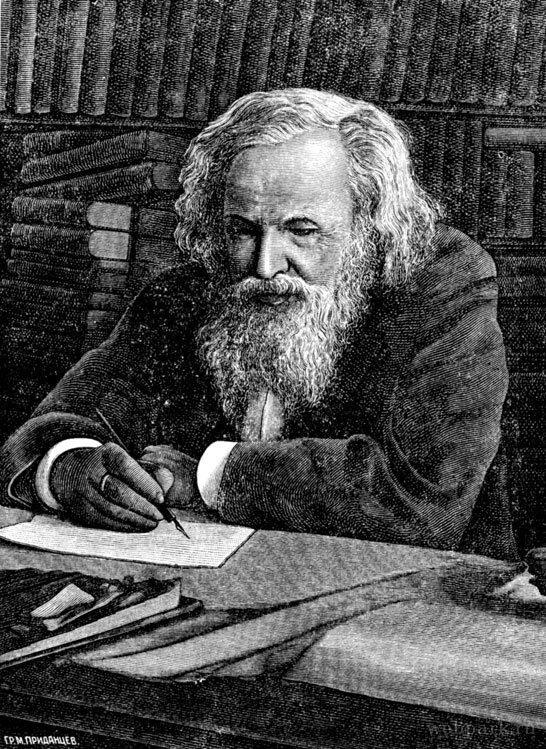783
Inventions dream
History of Inventions knows many technical breakthroughs and discoveries made during sleep. The most prominent and well-known of them in the scientific world is the periodic system of chemical elements - periodic table.

The earliest known case of inventions made in the dream, refers to the end of the XVI century. Admiral Yi commanded Sunshine Korean navy during the Japanese invasion in 1592. The Japanese were able to destroy a lot of Korean ships. Once Admiral dream monster: a sea turtle with a dragon's head, thrown out of the jaws of the fire. No swords could not penetrate the shell of a turtle. Waking up, Yi ordered shipbuilders to build a boat out of thick pine logs, iron studded armor. The nose of the ship was carried out in the form of a dragon's head, out of his mouth to shoot the cannon. A small fleet of battleships of the world's first repelled the attack foes.

During the "Gulf War", the US Army needs a lot of flak jackets, which are made of heavy-duty polyamide fiber Kevlar. But then the car broke down, producing the fiber at the firm "Dupont". Every minute of downtime cost the company $ 700, and could cost the lives of many soldiers. Engineers dismantled the installation, but could not find the cause of failure. One of the engineers, Floyd Ragsdale, at night, after a hard day, dreamed that he was inside the machine is running. Time and again in his mind rose hoses, springs and water dispensers. Waking up, he wrote on a piece of paper: "hoses, springs" - and fell asleep again.
Ragsdale morning long pondered the meaning of his record and what he saw in a dream. Finally he realized that the walls of the cooling water hoses in the car from time to time fallen down, interrupting the flow of water, and thermal switch stops the process. Inside hose references coil springs that prevent them from decay.
Arriving at work, Ragsdale shared his idea with the chief engineer, to say, however, how it originated. He shrugged none of the experts still have no idea that the cause of failure can be water-cooled. But in the evening, when all other attempts to establish the unit proved unsuccessful, the chief engineer is still allowed Ragsdale hoses provide cooling coils. At night, the production of Kevlar was restored. So one dream saved "Dupont" not less than three million dollars.

In 1782 William Watts, a plumber from Bristol (England), has invented a method of producing a dream shot. Balls then either individually cast in molds or cut from a thick lead wire, and then ran in a rotating drum to about rounded, or, finally, poured molten lead from a low altitude in a barrel with water - it turns teardrop-shaped grains. Locksmith had a rain of spherical drops of water. Waking up, he realized that it is necessary to pour molten lead from a great height in a special tower with a water pool at the bottom. On the way a drop of lead will be almost perfectly spherical. Since then shot and do.
But the move to a more peaceful inventions.
When an American mechanic Elias Howe in 1844 developed his first sewing machine, it is very eye of the needle to prevent thread. It is trailing behind him and did not allow a thread mechanism is easy to smuggle the needle through the fabric.
This is a problem faced by other inventors sewing machines, finding sometimes very strange decision. So, John Greenough in 1842 patented the needle pointed at both ends and with an eye to thread the needle in the middle. Special tweezers grabbed the needle on one side of the fabric, then the other and dragged her through the tissue, mimicking the movements of the hands seamstress. But the car worked much slower person.
And Howe had a nightmare: it captured the cannibals threatening to kill him if he did not immediately create a sewing machine! Hou said that the savages shake spears in tips that make holes. Waking up, the mechanic scribbled sketch of his system. Since then, all the sewing machines are such needles.

In the early 90-ies Alan Hyuang, headed the department of optical computers in the American company "Bell Laboratories", I struggled with the optical scheme, which would replace the computer electronics. A model in which the wires would be replaced by optical fibers can not do it. Hyuangu dream became a recurring dream. Swirls messengers carried by two intersecting corridors stack of papers, which, apparently, symbolized in the dream information. At the intersection of corridors constantly arise congestion as experienced cross flows.
But one day in the same dream messengers, like ghosts, began at the intersection smoothly pass through each other. Waking up, Hyuang realized that photons have exactly that capability, unlike the streams of electrons, with whom he used to dealing, developing conventional electronic circuits. And he was able to design optical computer using this feature light.
Optometrist Paul Horowitz of Harvard (USA), is developing a system of managing a large telescope, said that in case of complex problems often dreams, which suggests the idea of "voice-overs". Beside the bed he usually puts bedtime piece of paper and pencil to write down what he saw in a dream, as it instantly forgettable. The Nobel Prize, one of the inventors of the laser, Prokhorov once said: "Inspiration often comes in a dream. If you are afraid to forget the night a guess, put next to a stenographer ».
Programmer Stephen Bailey said that dreams help him to write computer programs. So, one day he was working on a program that was supposed to allow the computer's memory to work simultaneously on several complex mathematical problems. Once in a dream he saw the data floating before him in three-dimensional space. He watched abstract geometric shapes with numbers inside. Do not wake the programmer I understand how the algorithm should be used - the dream contains all the necessary details of the future program. Waking Bailey sat at the computer.
Bailey usually dream of such "abstract" dreams when he was working on a no-brainer. This usually occurs in the middle of the night, after several hours of sleep (which is typical for all sorts of dreams). At other times he sees dreams involving ordinary people and everyday environment, with talk and plot.

Other programmers have learned to call himself in his creative dreams. In difficult cases, he sees himself sitting in an old office in the company of Albert Einstein. In the dream, it turns out that Einstein - his longtime friend. They discuss not amenable to the task, draw chalk charts, diagrams and graphs on a blackboard. When the problem is solved, Einstein excused goes to sleep. A programmer concentrates on how to store obtained by the result of a brilliant scientist. Waking up, the programmer writes all the offers in a dream, and this decision is always helpful.
And in India, the use of dreams to solve various problems put on a grand scale. Thus, the national oil ministry staff trained to deal with in a dream his personal problems that interfere with effectively. But some of the staff resorted to master methods and work. One chemist was looking for enzymes that would be suitable for the processing of crude oil. He had a truck full of rotten cabbage (really the day before he went through the cabbage on the Indian vegetable base?). In the morning, resuming work on the project, he suddenly realized that the bacteria that cause rotting cabbage, can produce the same desired enzyme him. The chemist has developed a method for isolating the enzyme from the rotten cabbage and successfully applied it to process oil.
A petroleum engineer was to improve the design of the pump for pumping oil. S-shaped tube pump is often unsuccessful. The engineer called as he had been taught, dream about it and saw the letter S on U. changes awoke, he realized that the tube pump can have only one bend and this pump will work even better.
According to Australian psychologist Allan Snyder and John Mitchell, our brains, solving any problem, able to deal with any, even the wildest solutions. But the higher areas of the brain "edit" results, discarding all, do not fit into the so-called "common sense." In the dream, the "censorship" is turned off, or at least weakened, flowing into the consciousness of "crazy" options that sometimes are simply brilliant.
Sleep helps to find the right solutions and political activities. Cameramen love to catch the shot had fallen asleep at the meetings of the State Duma deputies and officials, dormant in various important events. But in the African kingdom of Swaziland Spanier at meetings there the deputies even encouraged. It is believed that during sleep the national representative communicates with the spirits of dead ancestors, and they give him important tips. Wake up the sleeping deputy deem bad taste.

And again about Mendeleev
Legend has it that the famous periodic system of chemical elements and dreamed of Russian inventors. Failed to identify the patterns of chemical elements continued long enough. February 17, 1869 Dmitri Ivanovich had to leave Petersburg in the Tver province to survey artisanal cheesemaking. At the time of his departure from the idea of the future of the elements. Postpone the trip, the scientist began to make sketches. After several hours of hard work, he lay down to rest. The fact that he saw in a dream, told his friend - a professor Inostrantsev: "I dream of a table where the elements are arranged as needed. I Woke, once wrote on a piece of paper and only one amendment took place ».
However, there is a version that Mendeleev invented the legend himself, ironically envy of mediocre colleagues fruitlessly pants sit on chairs. In fact, the idea to compare the similar atomic masses of various chemical elements and their properties came to him for a cup of morning coffee. Mendeleev immediately jumped up from the table, locked himself in his office, took a stack of business cards and quickly began to write something on their back. He became interested in doing this, he did not notice how time flew. His family heard from behind the door rushed furious cries: "Do what horny! I will overcome those. Kill! »
Who, exactly, was going to "kill" during the creative ecstasy of the genius chemist, it remained unknown. However, after several months of hard work, in the morning March 1, 1869 Mendeleev rewrote a fair copy compiled his table "Experience of elements based on their atomic weight and chemical similarity" and sent to the printer. And, as they say, the next day woke up famous all over the world.


The earliest known case of inventions made in the dream, refers to the end of the XVI century. Admiral Yi commanded Sunshine Korean navy during the Japanese invasion in 1592. The Japanese were able to destroy a lot of Korean ships. Once Admiral dream monster: a sea turtle with a dragon's head, thrown out of the jaws of the fire. No swords could not penetrate the shell of a turtle. Waking up, Yi ordered shipbuilders to build a boat out of thick pine logs, iron studded armor. The nose of the ship was carried out in the form of a dragon's head, out of his mouth to shoot the cannon. A small fleet of battleships of the world's first repelled the attack foes.

During the "Gulf War", the US Army needs a lot of flak jackets, which are made of heavy-duty polyamide fiber Kevlar. But then the car broke down, producing the fiber at the firm "Dupont". Every minute of downtime cost the company $ 700, and could cost the lives of many soldiers. Engineers dismantled the installation, but could not find the cause of failure. One of the engineers, Floyd Ragsdale, at night, after a hard day, dreamed that he was inside the machine is running. Time and again in his mind rose hoses, springs and water dispensers. Waking up, he wrote on a piece of paper: "hoses, springs" - and fell asleep again.
Ragsdale morning long pondered the meaning of his record and what he saw in a dream. Finally he realized that the walls of the cooling water hoses in the car from time to time fallen down, interrupting the flow of water, and thermal switch stops the process. Inside hose references coil springs that prevent them from decay.
Arriving at work, Ragsdale shared his idea with the chief engineer, to say, however, how it originated. He shrugged none of the experts still have no idea that the cause of failure can be water-cooled. But in the evening, when all other attempts to establish the unit proved unsuccessful, the chief engineer is still allowed Ragsdale hoses provide cooling coils. At night, the production of Kevlar was restored. So one dream saved "Dupont" not less than three million dollars.

In 1782 William Watts, a plumber from Bristol (England), has invented a method of producing a dream shot. Balls then either individually cast in molds or cut from a thick lead wire, and then ran in a rotating drum to about rounded, or, finally, poured molten lead from a low altitude in a barrel with water - it turns teardrop-shaped grains. Locksmith had a rain of spherical drops of water. Waking up, he realized that it is necessary to pour molten lead from a great height in a special tower with a water pool at the bottom. On the way a drop of lead will be almost perfectly spherical. Since then shot and do.
But the move to a more peaceful inventions.
When an American mechanic Elias Howe in 1844 developed his first sewing machine, it is very eye of the needle to prevent thread. It is trailing behind him and did not allow a thread mechanism is easy to smuggle the needle through the fabric.
This is a problem faced by other inventors sewing machines, finding sometimes very strange decision. So, John Greenough in 1842 patented the needle pointed at both ends and with an eye to thread the needle in the middle. Special tweezers grabbed the needle on one side of the fabric, then the other and dragged her through the tissue, mimicking the movements of the hands seamstress. But the car worked much slower person.
And Howe had a nightmare: it captured the cannibals threatening to kill him if he did not immediately create a sewing machine! Hou said that the savages shake spears in tips that make holes. Waking up, the mechanic scribbled sketch of his system. Since then, all the sewing machines are such needles.

In the early 90-ies Alan Hyuang, headed the department of optical computers in the American company "Bell Laboratories", I struggled with the optical scheme, which would replace the computer electronics. A model in which the wires would be replaced by optical fibers can not do it. Hyuangu dream became a recurring dream. Swirls messengers carried by two intersecting corridors stack of papers, which, apparently, symbolized in the dream information. At the intersection of corridors constantly arise congestion as experienced cross flows.
But one day in the same dream messengers, like ghosts, began at the intersection smoothly pass through each other. Waking up, Hyuang realized that photons have exactly that capability, unlike the streams of electrons, with whom he used to dealing, developing conventional electronic circuits. And he was able to design optical computer using this feature light.
Optometrist Paul Horowitz of Harvard (USA), is developing a system of managing a large telescope, said that in case of complex problems often dreams, which suggests the idea of "voice-overs". Beside the bed he usually puts bedtime piece of paper and pencil to write down what he saw in a dream, as it instantly forgettable. The Nobel Prize, one of the inventors of the laser, Prokhorov once said: "Inspiration often comes in a dream. If you are afraid to forget the night a guess, put next to a stenographer ».
Programmer Stephen Bailey said that dreams help him to write computer programs. So, one day he was working on a program that was supposed to allow the computer's memory to work simultaneously on several complex mathematical problems. Once in a dream he saw the data floating before him in three-dimensional space. He watched abstract geometric shapes with numbers inside. Do not wake the programmer I understand how the algorithm should be used - the dream contains all the necessary details of the future program. Waking Bailey sat at the computer.
Bailey usually dream of such "abstract" dreams when he was working on a no-brainer. This usually occurs in the middle of the night, after several hours of sleep (which is typical for all sorts of dreams). At other times he sees dreams involving ordinary people and everyday environment, with talk and plot.

Other programmers have learned to call himself in his creative dreams. In difficult cases, he sees himself sitting in an old office in the company of Albert Einstein. In the dream, it turns out that Einstein - his longtime friend. They discuss not amenable to the task, draw chalk charts, diagrams and graphs on a blackboard. When the problem is solved, Einstein excused goes to sleep. A programmer concentrates on how to store obtained by the result of a brilliant scientist. Waking up, the programmer writes all the offers in a dream, and this decision is always helpful.
And in India, the use of dreams to solve various problems put on a grand scale. Thus, the national oil ministry staff trained to deal with in a dream his personal problems that interfere with effectively. But some of the staff resorted to master methods and work. One chemist was looking for enzymes that would be suitable for the processing of crude oil. He had a truck full of rotten cabbage (really the day before he went through the cabbage on the Indian vegetable base?). In the morning, resuming work on the project, he suddenly realized that the bacteria that cause rotting cabbage, can produce the same desired enzyme him. The chemist has developed a method for isolating the enzyme from the rotten cabbage and successfully applied it to process oil.
A petroleum engineer was to improve the design of the pump for pumping oil. S-shaped tube pump is often unsuccessful. The engineer called as he had been taught, dream about it and saw the letter S on U. changes awoke, he realized that the tube pump can have only one bend and this pump will work even better.
According to Australian psychologist Allan Snyder and John Mitchell, our brains, solving any problem, able to deal with any, even the wildest solutions. But the higher areas of the brain "edit" results, discarding all, do not fit into the so-called "common sense." In the dream, the "censorship" is turned off, or at least weakened, flowing into the consciousness of "crazy" options that sometimes are simply brilliant.
Sleep helps to find the right solutions and political activities. Cameramen love to catch the shot had fallen asleep at the meetings of the State Duma deputies and officials, dormant in various important events. But in the African kingdom of Swaziland Spanier at meetings there the deputies even encouraged. It is believed that during sleep the national representative communicates with the spirits of dead ancestors, and they give him important tips. Wake up the sleeping deputy deem bad taste.

And again about Mendeleev
Legend has it that the famous periodic system of chemical elements and dreamed of Russian inventors. Failed to identify the patterns of chemical elements continued long enough. February 17, 1869 Dmitri Ivanovich had to leave Petersburg in the Tver province to survey artisanal cheesemaking. At the time of his departure from the idea of the future of the elements. Postpone the trip, the scientist began to make sketches. After several hours of hard work, he lay down to rest. The fact that he saw in a dream, told his friend - a professor Inostrantsev: "I dream of a table where the elements are arranged as needed. I Woke, once wrote on a piece of paper and only one amendment took place ».
However, there is a version that Mendeleev invented the legend himself, ironically envy of mediocre colleagues fruitlessly pants sit on chairs. In fact, the idea to compare the similar atomic masses of various chemical elements and their properties came to him for a cup of morning coffee. Mendeleev immediately jumped up from the table, locked himself in his office, took a stack of business cards and quickly began to write something on their back. He became interested in doing this, he did not notice how time flew. His family heard from behind the door rushed furious cries: "Do what horny! I will overcome those. Kill! »
Who, exactly, was going to "kill" during the creative ecstasy of the genius chemist, it remained unknown. However, after several months of hard work, in the morning March 1, 1869 Mendeleev rewrote a fair copy compiled his table "Experience of elements based on their atomic weight and chemical similarity" and sent to the printer. And, as they say, the next day woke up famous all over the world.
























